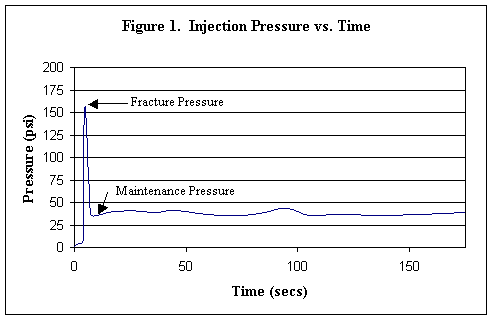Hydraulic Fracturing
Hydraulic fracturing is used to improve the permeability of the subsurface. Hydraulic fracturing involves injecting a liquid or slurry solution at a pressure that exceeds the combined lithostatic pressure and cohesive strength of the formation. The lithostatic pressure is essentially equivalent to the weight of the soil column above the injection point. The cohesive strength is a measure of how well the soil particles have adhered to one another. For example, clays have significantly greater cohesive strength.
the permeability of the subsurface. Hydraulic fracturing involves injecting a liquid or slurry solution at a pressure that exceeds the combined lithostatic pressure and cohesive strength of the formation. The lithostatic pressure is essentially equivalent to the weight of the soil column above the injection point. The cohesive strength is a measure of how well the soil particles have adhered to one another. For example, clays have significantly greater cohesive strength.
Redox Tech uses a Geoprobe® and a mobile injection trailer to complete hydraulic fracturing. The Geoprobe® rod is driven to depth, and then the outer casing is retracted to expose a proprietary injection nozzle. The fluid is pumped into the formation at a rate that exceeds the ability of the formation to accept the fluid. As a result, the pressure continues to rise until fractures are created. The injection pressure drops dramatically at the onset of fracturing (see Figure 1). Fracturing pressures for unconsolidated sediments at depths less than 50 feet can range from 80 psi to 250 psi. After fracturing occurs, the fluid must be continued to be injected to keep the fractures open. The pressure to keep the fractures open is called maintenance pressure. The maintenance pressure is about 10% to 50% of the fracture pressure.
With hydraulic fracturing, the injection rate can easily be increased up to one order of magnitude. Also, the radius of influence that is obtained can be increased by a factor of two to three times. This reduces the time required and results in significant cost savings over conventional injection technology.